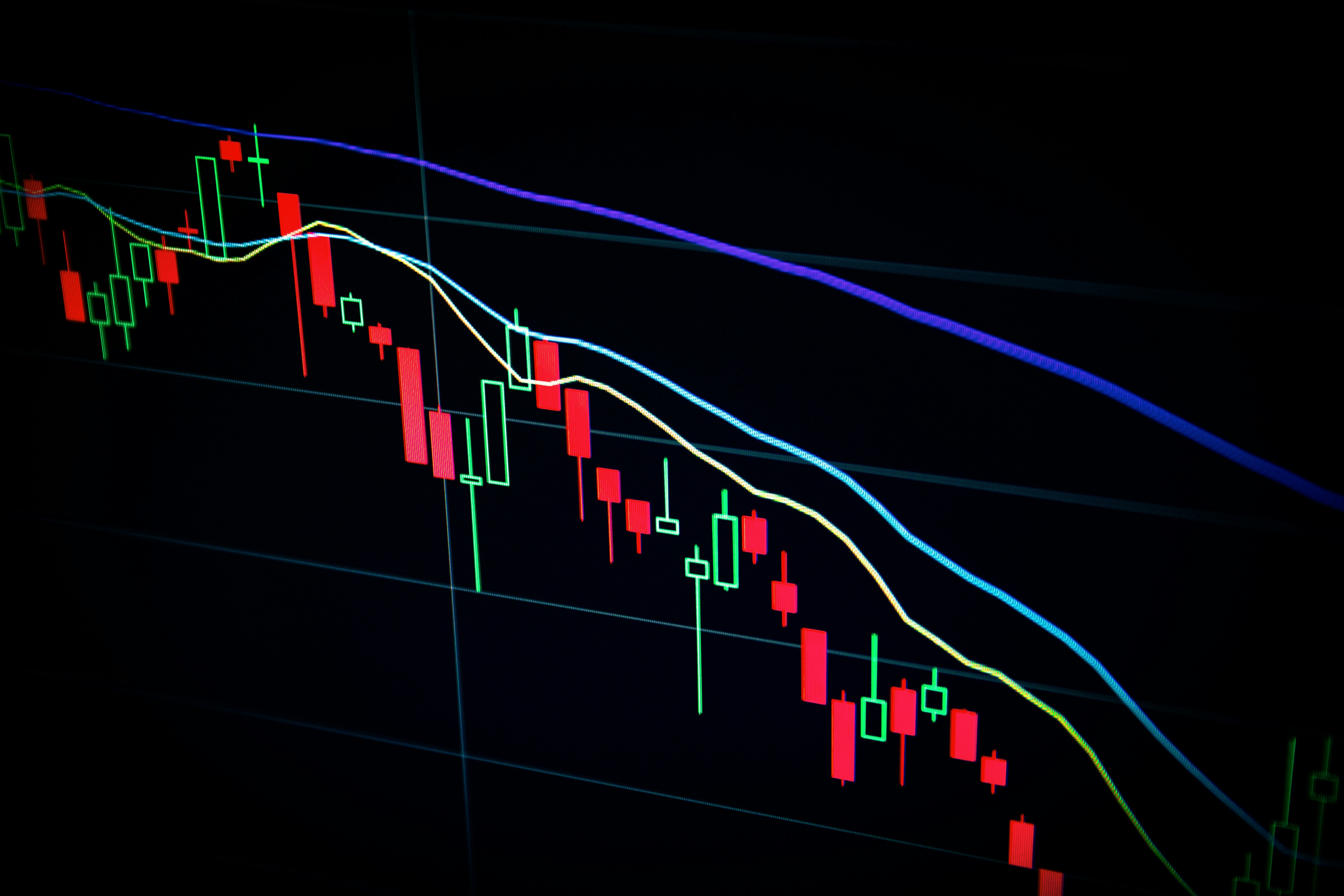Technical Pareidolia

Okuhle Madondo
November 30, 2024

Technical analysis, the practice of predicting price movements through historical data and chart patterns, is a cornerstone of many trading strategies. Traders scrutinize candlesticks, moving averages, and support levels, hoping to divine future market behavior. Yet, philosophically, technical analysis crumbles under examination, especially in algorithm-dominated, highly efficient markets like foreign exchange (FX). Its reliance on pattern recognition mirrors pareidolia—the human tendency to find meaning in randomness—and any profits it generates are often a stochastic illusion, unsustainable over time. Moreover, predicting the direction of stochastic processes like market prices is a futile endeavor. In contrast, strategies such as portfolio rebalancing and inventory rebalancing—adjusting quantities held rather than forecasting price direction—offer a more rational approach. This article delves into these issues, exposing the shaky foundations of technical analysis and advocating for rebalancing as a sounder alternative.
Humans are pattern-seeking creatures, prone to seeing significance where none exists—a phenomenon called pareidolia. We spot faces in toast or constellations in stars, and technical analysis channels this instinct into financial markets. Traders identify “head and shoulders,” “triangles,” or “Fibonacci levels” in price charts, ascribing predictive power to these shapes. But in efficient markets like FX, where prices reflect a chaotic blend of economic data, policy shifts, and global events, these patterns are often random noise masquerading as signal.
Philosophically, technical analysis conflates correlation with causation. A chart pattern may align with a price move once, but there’s no logical basis for expecting it to repeat consistently. In efficient markets, where information is swiftly priced in, any predictable pattern would be exploited and neutralized by arbitrageurs. The act of spotting a pattern undermines its validity, as others—human or machine—act on it, altering the outcome. Technical analysis thus becomes a self-defeating exercise in seeing order where randomness prevails.
Modern financial markets, particularly FX, are ruled by algorithms. High-frequency trading (HFT) firms, hedge funds, and institutional players deploy models that process vast datasets in real time, exploiting inefficiencies far beyond human capability. In the FX market, with over $7 trillion in daily turnover, prices reflect near-instantaneous incorporation of public information. Algorithms don’t rely on chart patterns; they target microstructural edges, statistical arbitrage, or fleeting mispricings invisible to the naked eye.
Technical analysis, built on human intuition and manual chart reading, is outmatched in this environment. If a simple indicator like a moving average crossover or RSI divergence held consistent value, algorithms would have arbitraged it away long ago. The efficiency of FX ensures that edges derived from public data—like price and volume—are short-lived. Traders may believe they’ve found a winning formula, but in reality, they’re often chasing shadows cast by machines.
When technical traders profit, they credit their skill, but randomness often deserves the applause. Financial markets are stochastic processes, driven by probabilistic outcomes rather than deterministic rules. A strategy might work briefly, riding a wave of favorable conditions, but this success rarely endures. Over time, most technical strategies either lose money or break even, as transaction costs (spreads, commissions) and market noise erode returns.
Imagine a trader using a breakout strategy, buying when prices breach a resistance level. A few wins may bolster their confidence, but markets are not static. Volatility shifts, correlations dissolve, and yesterday’s edge becomes tomorrow’s loss. Research, such as a 2018 study on FX trading, shows that technical indicators—from Bollinger Bands to MACD—rarely outperform random walk models after costs. Success, when it happens, is often a statistical fluke, amplified by survivorship bias. The traders boasting on social media are the lucky outliers; the silent majority, burned by failed patterns, tell a different story.
Technical analysis hinges on predicting the “sign” of price movements—whether an asset will rise or fall. But forecasting the direction of a stochastic process like market prices is a losing game. In efficient markets, prices approximate a random walk, where future moves are largely independent of past ones. Trends, when they emerge, often stem from fundamental shifts—like interest rate changes—that technical indicators merely lag behind.
Mathematically, the challenge is stark. Even a trader who predicts price direction correctly 60% of the time—a rare feat—faces losses from transaction costs and occasional large reversals. In FX, with high leverage and tight spreads, precision must be near-perfect to overcome these frictions. Technical analysis, with its subjective signals and lagging indicators, falls short. Worse, markets adapt: a widely recognized pattern loses its edge as others exploit it. Algorithms, with their real-time adaptability, ensure that static technical rules are quickly rendered obsolete.
If technical analysis is philosophically unsound, what alternatives exist? Two strategies stand out: portfolio rebalancing and inventory rebalancing. Both prioritize discipline over prediction, aligning with the stochastic nature of markets.
Portfolio Rebalancing involves periodically adjusting a portfolio to maintain a target allocation—say, 50% equities, 50% bonds. Instead of guessing price direction, it capitalizes on mean reversion, selling assets that have risen and buying those that have fallen. In FX, where currencies fluctuate but often revert to long-term equilibria, rebalancing can capture value without requiring precise forecasts. Studies show that systematic portfolio rebalancing often outperforms active trading, as it avoids the costs and errors of market timing.
Inventory Rebalancing, a related but distinct concept, focuses on adjusting the quantity of a specific asset held—such as a stock or currency pair—based on predefined rules rather than price predictions. For example, a trader might hold a stock and set thresholds for its quantity: if the position grows too large (say, due to price appreciation), they sell a portion; if it shrinks, they buy more. This approach mirrors how market makers manage inventory, ensuring exposure stays within desired bounds. In FX, a trader might rebalance their holdings of a currency pair like EUR/USD, trimming or adding based on position size rather than betting on whether the euro will rise or fall.
Inventory rebalancing sidesteps the pitfalls of sign prediction. It doesn’t assume the trader knows where prices are headed; instead, it treats price movements as noise and focuses on maintaining a stable position. For instance, a trader holding 10,000 units of a stock might sell 1,000 units if the price spikes, reducing exposure, or buy 1,000 if it dips, increasing it. Over time, this can lock in gains and buy low, exploiting volatility without forecasting direction. In efficient markets, where prices oscillate unpredictably, this method leverages randomness rather than fighting it.
Empirical evidence supports rebalancing’s merits. Portfolio rebalancing has been shown to enhance returns in multi-asset portfolios, while inventory rebalancing is a staple of professional trading desks, from FX to equities. Both approaches thrive in stochastic environments because they don’t rely on the illusion of control that technical analysis demands.
Technical analysis, while alluring, is philosophically flawed in today’s financial markets. Its resemblance to pareidolia reveals a human bias for finding patterns in noise, but in algorithm-driven, efficient markets like FX, these patterns lack predictive power. Profits from technical strategies are often stochastic illusions, eroded by costs and market adaptability. Predicting the sign of price movements is a futile pursuit, as stochastic processes defy consistent forecasting. Instead, rebalancing—whether of portfolios or inventory—offers a more rational path. By focusing on quantity adjustments rather than price guesses, these strategies embrace market uncertainty, turning randomness into an ally. In a world of algorithms and noise, discipline, not divination, is the trader’s best tool.
(Photo by Maxim Hopman on Unsplash btw.)
Continue Reading
The Quartet - For The Layman
2 July 2025
The 'Quartet' made accessible to the average, non-technical person.

